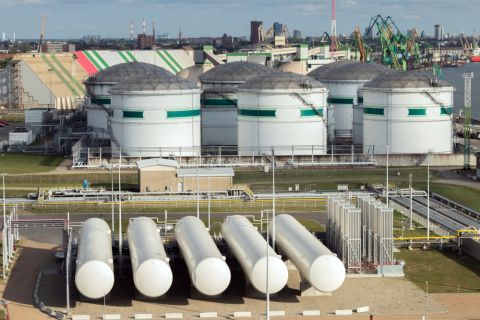Big finds are a thing of the past. Operators are now seeking ways to increase the net present value of found reserves. While the spectrum for improvements in drilling and completion technology is wide, one focused area that will continue to improve will be the coupling of drilling and completion applications overall.
By shortening the gap between drilling and completion operations, companies will lower costs and create shorter paths to first production. In a recent conversation, William K. (Bill) Ott, P.E., Well Completion Technology – Houston, shared his perspective on the benefits of this R&D objective.
The most important elements of combining drilling and completion processes include reducing the tendency to damage the producing formation during drilling and cementing operations.
“Lessening the formation damage potential by using more rock compatible drilling fluids and restricting fluid loss could reduce completion costs and allow for enhanced production,” Ott said, adding that “liaising between two well construction entities about how to obtain a quality cement job could have a beneficial outcome too.” Another important element would include extending the time from initial production to the first workover and then lengthening intervals between workovers by insuring better isolation behind casing.
“Planning better for the well completion during drilling could improve well efficiencies — especially increased ultimate hydrocarbon recovery for the reservoir before implementing enhancements,” Ott said. These developments will most likely reduce overall costs by decreasing rig time.
The improvements in closing the gap between drilling and completion jobs will develop through collaboration between operating companies and service companies.
Combining these technologies would tend to optimize well production, which would be a significant motivator for working closely together on their development, Ott said.
Drilling and completion have moved closer together in recent years, though it is uncertain exactly what improvements have been experienced through this development. According to Ott, “Joining/coupling of drilling and completion thought processes would be more applicable to higher cost projects — both offshore and onshore.”
Improving cooperation between drilling and completion entities would ultimately lead to better NPV numbers in both conventional and unconventional developments. Some of the possible new technologies could lead to the expanded application of intelligent well technologies in controlling production with new inventions through the well completion.
Where R&D budgets are concerned Ott explained, “Laboratory tests already exist for evaluating formation damage from drilling fluid filtrates and solids invasion into the payzone.” This is in addition to an ample amount of documentation and references for reducing formation damage. “All that needs to be done is better mesh between drilling and completion through the application of current technologies.” He added that this would in turn help to identify areas in which to pursue R&D funding.
Signa Engineering along with a host of major integrated service companies and drilling engineering consulting companies will play a major role in improving technology in this area of the industry. However, Ott adds, “Accepting status quo thinking could hinder growth and application of coupled drilling and completion engineering.”
The main motivator for improvements in the relationship between drilling and completion technology is to increase initial values of high-cost projects. By producing resources through refined operational procedures, companies will vastly improve upon their ability to increase energy reserves.
While improvements have occurred in the coupling of drilling and completion activities, there is certainly room for improvement. That will be achieved through continued collaboration among industry partners that maintain a willingness to invest in R&D to find more efficient means of reaching their goals.
Recommended Reading
Diamondback’s Van’t Hof Plays Coy on Potential Delaware Divestiture
2024-05-16 - Diamondback Energy’s President and CFO Kaes Van't Hof also addressed new Permian exploration and the lack of “fun” dealing with the FTC on its deal to buy Endeavor Energy Resources.
Minerals Market Growing But Needs More Scale, Consolidation
2024-05-15 - The market value of public minerals and royalties companies has doubled since 2019—but the sector needs to grow even larger to attract generalist investors into the fray, experts say.
Marketed: Berlin Resources Anadarko Basin Opportunity
2024-05-13 - Berlin Resources LLC has retained EnergyNet for the sale of an Anadarko Basin opportunity in the Donita 35/2 AP #1H in Roger Mills County, Oklahoma.
TotalEnergies, Sinopec to Develop SAF Unit in China
2024-03-26 - TotalEnergies and Sinopec’s production unit will have the capacity to produce 230,000 tons of sustainable aviation fuel per year.
‘Unexpected’ JV to Move Permian NatGas to Gulf Coast LNG Terminals
2024-03-26 - A trio of midstream companies—Enbridge, Whitewater and MPLX—will work together to build infrastructure to transport Permian Basin natural gas to Gulf Coast LNG terminals.




